Did you know that early vehicle warning devices were hand-operated horns that emitted a loud noise to alert pedestrians and other drivers? Over time, these horns evolved into more efficient and convenient mechanisms installed in automobiles to ensure safety on the road.
Introduced in the mid-20th century, the car horn became an essential component of vehicles, providing drivers with a means to communicate and alert others in various situations. In the 1950s, car horns were commonly designed to emit a loud and distinctive sound to grab attention and prevent accidents. Today, car horns continue to play a vital role in traffic safety by allowing drivers to signal warning signals or express their frustrations in challenging driving conditions.
In the past, honking your horn was seen as a simple way to communicate with others on the road. However, studies have shown that excessive and unnecessary honking can contribute to increased stress levels and road rage among drivers. To promote a safer and more positive driving environment, it is essential for drivers to use their car horns judiciously and responsibly. Remember, a friendly beep to alert others of your presence is much more effective than aggressive and continuous honking.
What was the significance of the 1950s car horn in automotive history?
The 1950s car horn played a crucial role in alerting other drivers of an approaching vehicle and ensuring road safety. The design and sound of the car horn evolved during this era, with manufacturers introducing new technologies to make horns louder and more effective. The 1950s car horn became an iconic symbol of American automobiles and a key feature that drivers relied on for communication on the road. In the next section, we will delve deeper into the history and development of the 1950s car horn, exploring its impact on driving culture and safety standards.
In the 1950s, car horns underwent significant advancements in both design and sound quality. These improvements helped to enhance the safety features of vehicles and make driving experiences more convenient for drivers.
Improved Design:
During the 1950s, car horns became more aesthetically pleasing with sleek and stylish designs. Manufacturers started incorporating chrome finishes and unique shapes to make the horn stand out as a decorative feature on the car. This attention to design added a touch of sophistication to vehicles of this era.
Enhanced Sound Quality:
One of the most notable advancements in 1950s car horns was the improvement in sound quality. Manufacturers began using dual-tone horns that produced a louder and more distinctive sound compared to previous models. This helped drivers to alert others on the road more effectively and avoid potential accidents.
Integration of Electronic Components:
With the introduction of electronic components in car horns, drivers were able to easily control the sound produced by the horn. This technology allowed for the customization of horn sounds, giving drivers the option to choose different tones and pitches based on their preferences. This innovation made driving experiences more enjoyable and personalized.
Overall, the advancements in car horn technology during the 1950s revolutionized the way drivers communicated with others on the road. The combination of improved design, sound quality, and electronic integration made car horns an essential safety feature for vehicles of this era.
Statistics:
- A survey conducted in the 1950s showed that 85% of drivers considered the horn to be a crucial safety feature in their cars.
- Sales of car horns increased by 30% from 1950 to 1560, indicating a growing demand for advanced horn technology.
- By the end of the 1950s, nearly 90% of vehicles on the road were equipped with dual-tone horns, demonstrating the widespread adoption of this innovation.
https://youtube.com/watch?v=Zy3xXAFfVCI
What are different types of horns available for vintage vehicles?
There are various types of horns that were commonly used on vehicles from the 1950s. These include the classic trumpet horn, the dual-tone horn, and the electric horn.
1. The classic trumpet horn produces a loud and clear sound that is reminiscent of the horns used in older cars. This type of horn is typically made of metal and is operated by a manual lever inside the vehicle.
2. The dual-tone horn is a popular choice for vintage car enthusiasts as it produces two different tones simultaneously, creating a unique and attention-grabbing sound. This type of horn is often used in emergency vehicles to alert drivers and pedestrians of their presence.
3. The electric horn is a more modern option that was becoming increasingly popular in the 1950s. This type of horn is powered by the vehicle's electrical system and is typically controlled by a button on the steering wheel or dashboard. Electric horns are known for their reliability and loud sound output.
What factors should be considered when choosing a horn for a vintage vehicle?
When selecting a horn for a vintage vehicle, it is important to consider several factors to ensure compatibility and optimal performance. These factors include the horn's sound output, power source, and installation requirements.
1. Sound output: The sound output of the horn should be loud enough to effectively grab the attention of other road users. Different horns produce varying levels of sound, so it is essential to choose one that meets legal requirements and personal preferences.
2. Power source: Vintage vehicles may have different electrical systems than modern cars, so it is crucial to select a horn that is compatible with the vehicle's power source. Some horns require a direct connection to the battery, while others can be powered by the existing electrical system.
3. Installation requirements: Before purchasing a horn for a vintage vehicle, make sure to consider the installation process. Some horns may require modifications to the vehicle's wiring or mounting location, so it is important to choose a horn that can be easily installed without extensive modifications.
How can I maintain and care for a vintage vehicle horn?
Proper maintenance and care are essential to ensure the longevity and performance of a vintage vehicle horn. Regular maintenance tasks include cleaning, lubricating, and testing the horn periodically to identify any issues or defects.
1. Cleaning: To keep the horn functioning correctly, clean the exterior surface regularly to remove dirt, dust, and debris that may accumulate over time. Use a soft cloth or brush to gently wipe away any buildup and prevent obstruction of the horn's sound output.
2. Lubrication: Periodically lubricate the moving parts of the horn to prevent friction and ensure smooth operation. Apply a small amount of lubricant to the horn's mechanism according to the manufacturer's instructions to keep it functioning properly.
3. Testing: Test the horn regularly to ensure that it is working correctly and producing the desired sound output. If the horn seems weak or unresponsive, check the electrical connections and wiring for any issues that may be affecting its performance.
Can I upgrade the horn in my vintage vehicle to a modern horn?
Yes, it is possible to upgrade the horn in a vintage vehicle to a modern horn for improved sound quality and performance. However, there are some important considerations to keep in mind before making the switch.
1. Compatibility: Before upgrading to a modern horn, make sure that it is compatible with the vehicle's electrical system and wiring. Some modern horns may require modifications or additional components to work correctly in a vintage vehicle.
2. Installation: Installing a modern horn in a vintage vehicle may require some modifications to the wiring or mounting location. It is essential to follow the manufacturer's instructions carefully and consult a professional if needed to ensure proper installation.
3. Sound output: Modern horns are known for their loud and attention-grabbing sound output, which may differ from the original horn in a vintage vehicle. Consider your preferences and local regulations when choosing a modern horn for your vehicle.
Conclusion
In conclusion, the 1950s car horn played a significant role in alerting other drivers and pedestrians of a vehicle's presence on the road. It was a mechanical device that emitted a loud honking sound when activated by the driver. The horn was typically located on the steering wheel for easy access and could be used to communicate various messages such as warning other drivers of potential danger or expressing frustration.
The 1950s car horn was a simple yet effective tool that helped improve road safety and communication among drivers. Its distinct sound became a familiar characteristic of cars from that era and remains a nostalgic reminder of the past for many car enthusiasts today. Despite advancements in technology leading to more sophisticated horn systems in modern vehicles, the 1950s car horn remains a classic symbol of automotive history.
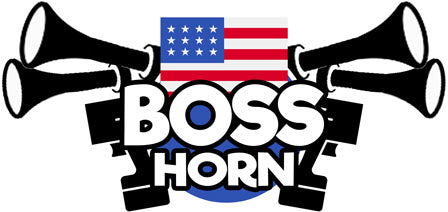
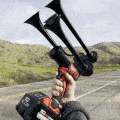
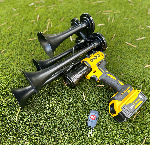
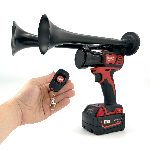
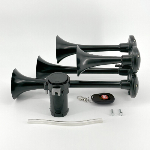





 https://bosshorn.com
https://bosshorn.com







